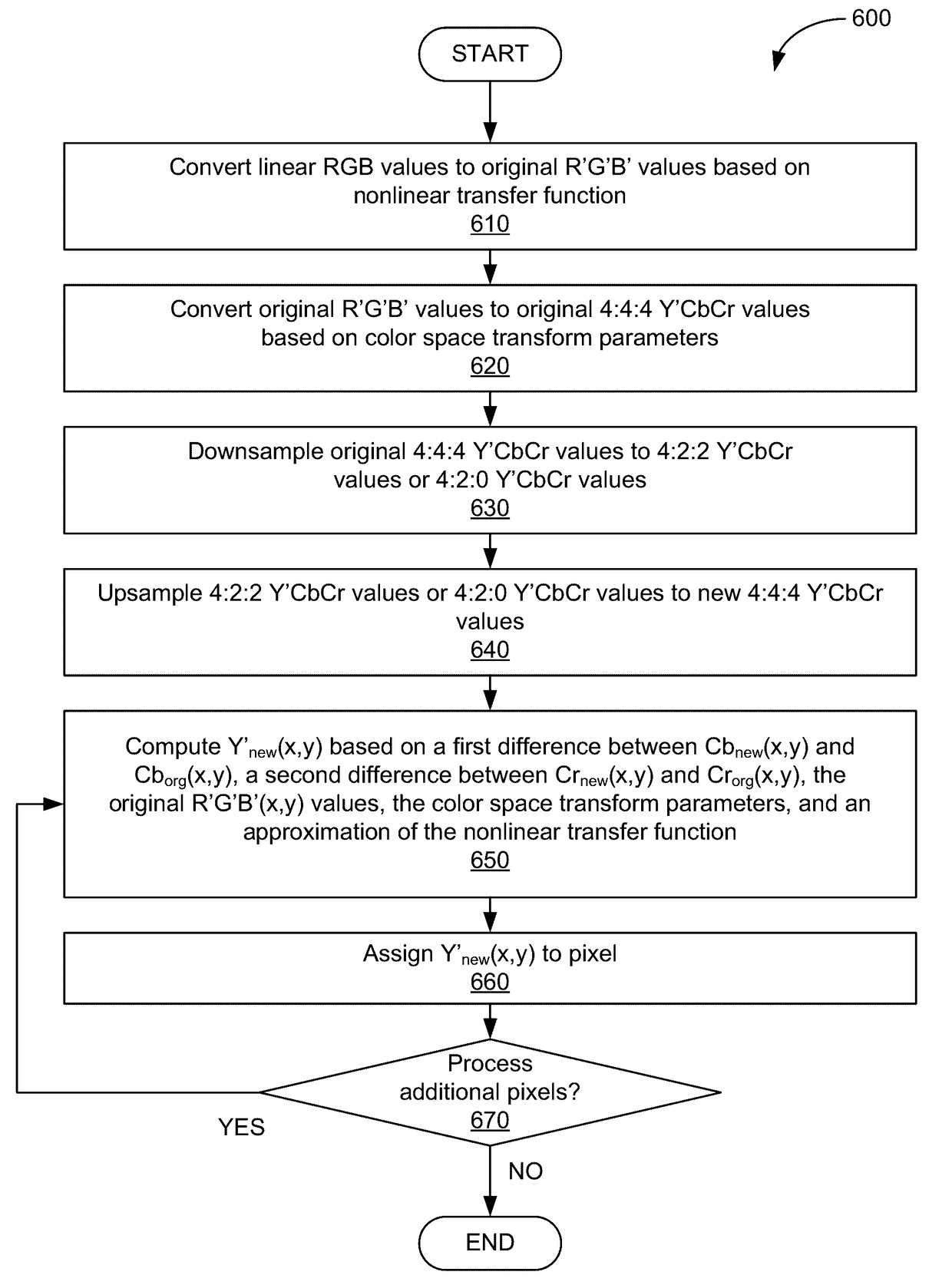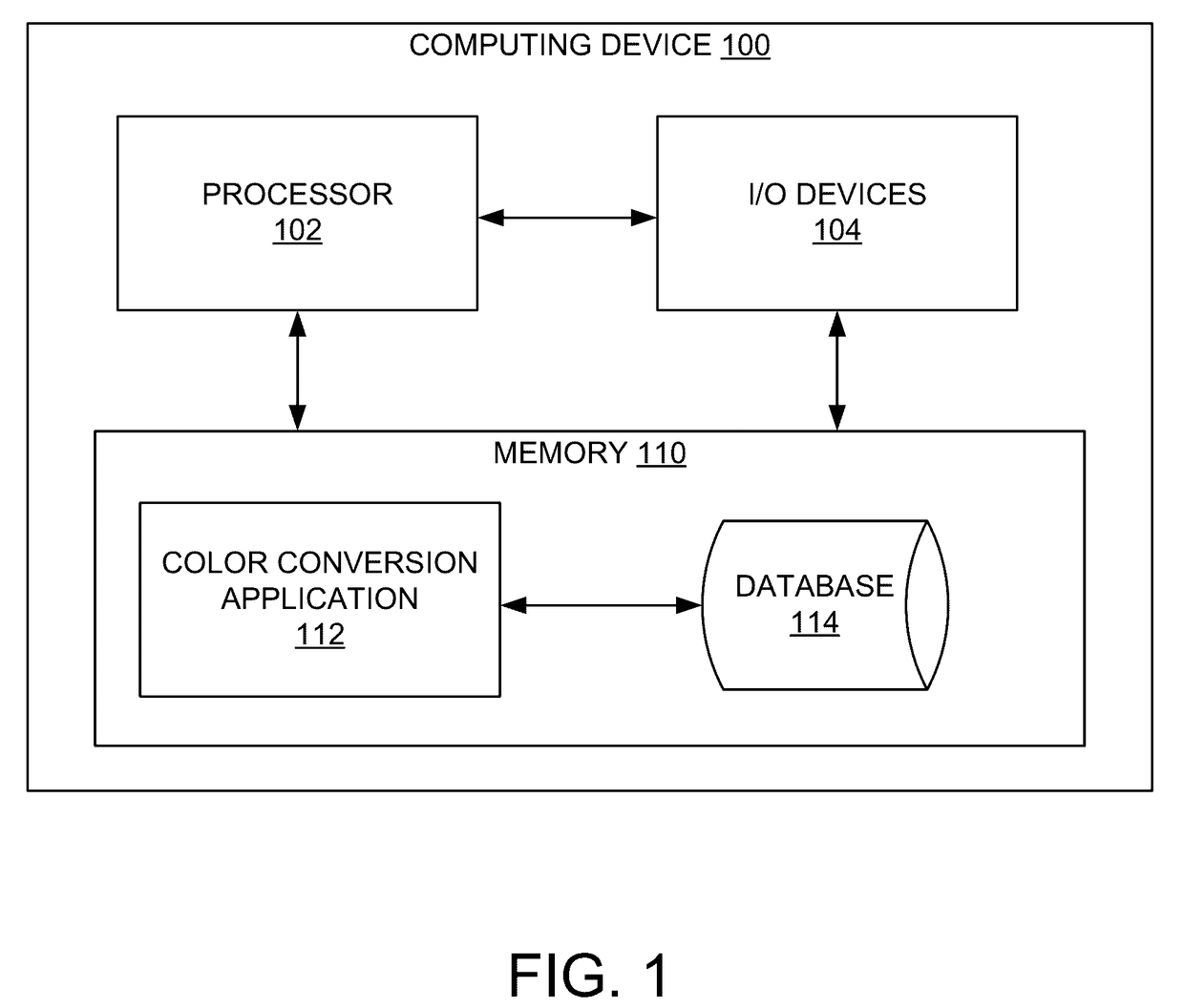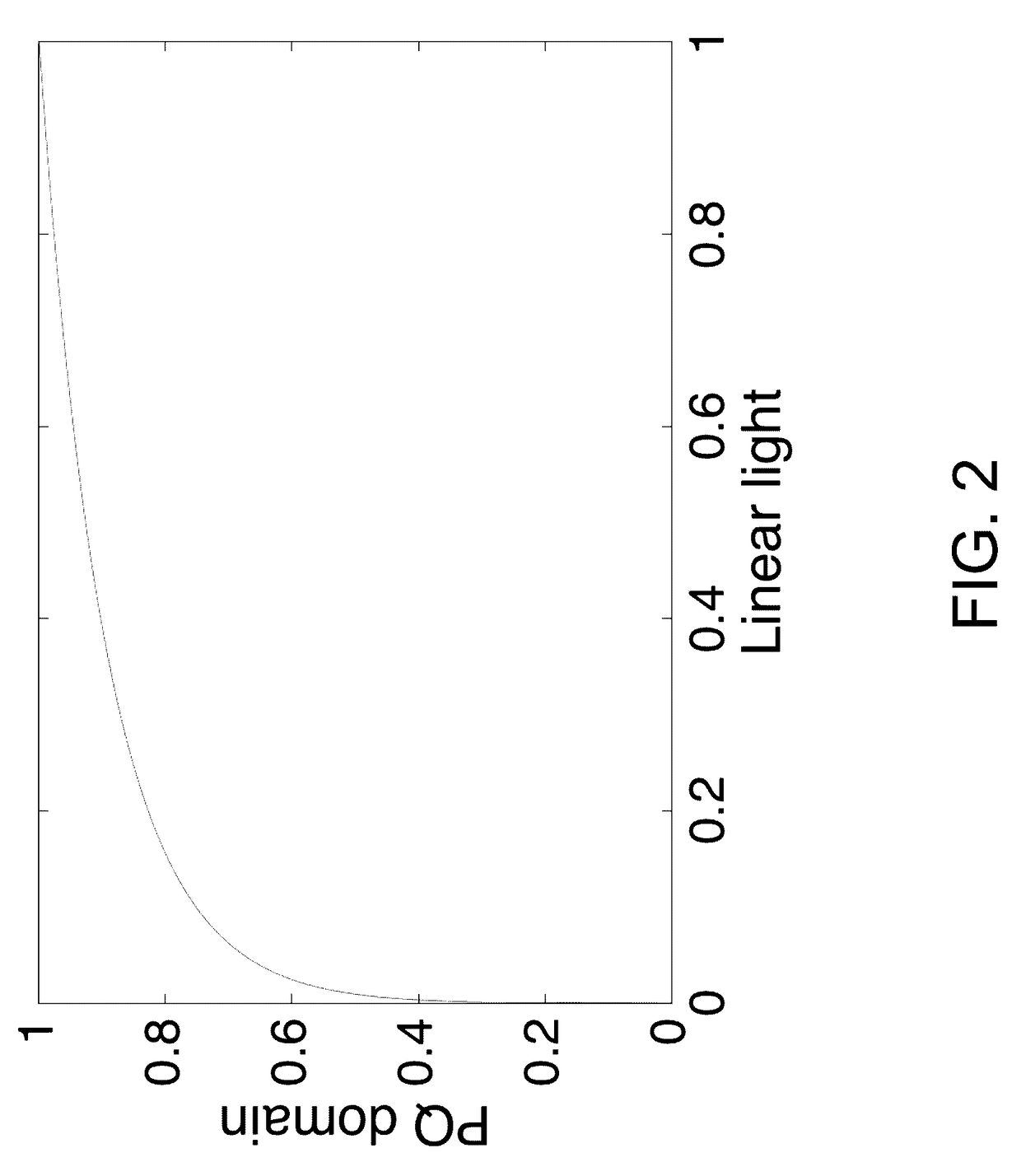High dynamic range color conversion correction
- Summary
- Abstract
- Description
- Claims
- Application Information
AI Technical Summary
Benefits of technology
Problems solved by technology
Method used
Image
Examples
example 1
t Function
[0036]In some embodiments, the distance (D) between RGBnew(x,y) and RGBorg(x, y) could be measured as the Euclidean norm (e.g., the squared error for each component):
D=(Rnew(x,y)−Rorg(x,y))2+(Gnew(x,y)−Gorg(x,y))2+(Bnew(x,y)−Borg(x,y))2 (3)
[0037]Omitting sample coordinates for simpler notation, the cost function is as follows:
D=(Rnew−Rorg)2(Gnew−Gorg)2(Bnew−Borg)2 (4)
[0038]In a more general case, we can also weight the importance of each color component R, G and B with a weighting factor wX, where X corresponds to a color component, wR, wG, and wB. Then, our cost function would take a form of Equation 5 or Equation 6, where f is the EOTF function, such as the ST.2084 EOTF PQ.:
D=wR(Rnew−Rorg)2wG(Gnew−Gorg)2wB(Bnew−Borg)2 (5)
D=wR(f(R′new)−f(R′org))2+wG(f(G′new)−f(G′org))2+wB(f(B′new)−f(B′org))2 (6)
[0039]The values R′, G′ and B′ can be obtained from the original Y′CbCr values by applying an inverse color transform, which depends on the color space associated with the Y′Cb...
example 2
st Function
[0057]In some embodiments, the distance (D) could be measured as a sum of weighted differences between individual R, G, and B components of RGBnew(x,y) and RGBorg(x, y). In such embodiments, the difference between the two values could be calculated according to Equation 18, where wR, wG, and wB are the weights corresponding to each color component and R, G, and B.
D=wR(Rnew(x,y)−Rorg(x,y))+wG(Gnew(x,y)−Gorg(x,y))+wB(Bnew(x,y)−Borg(x,y)) (18)
[0058]Then, after omitting pixel coordinates for a simpler notation, the cost function is defined by Equation 19 or Equation 20, where f(X) is the EOTF function:
D=wRRnew−Rorg)+wG(Gnew−Gorg)+wB(Bnew−Borg) (19)
D=wR(f(R′new)−f(R′org))+wG(f(G′new)−f(G′org))+wB(f(B′new)−f(B′org)) (20)
[0059]As noted above, the transfer function domain values R′, G′, and B′ can then be obtained from Y′CbCr by applying an inverse color transform, such as the BT.709 and BT.2020 transform:
(R′G′B′)=(a1,1a1,2a1,3a2,1a2,2a2,3a3,1a3,2a3,3)(Y′CbCr)(21)
[0060]In vari...
PUM
 Login to View More
Login to View More Abstract
Description
Claims
Application Information
 Login to View More
Login to View More - R&D
- Intellectual Property
- Life Sciences
- Materials
- Tech Scout
- Unparalleled Data Quality
- Higher Quality Content
- 60% Fewer Hallucinations
Browse by: Latest US Patents, China's latest patents, Technical Efficacy Thesaurus, Application Domain, Technology Topic, Popular Technical Reports.
© 2025 PatSnap. All rights reserved.Legal|Privacy policy|Modern Slavery Act Transparency Statement|Sitemap|About US| Contact US: help@patsnap.com



